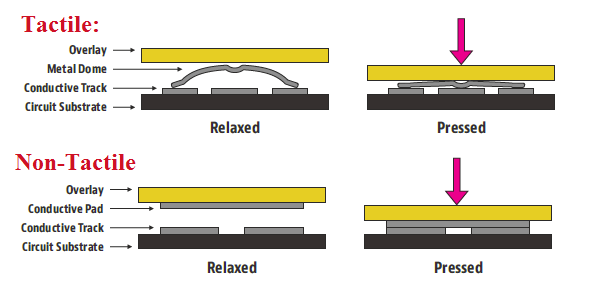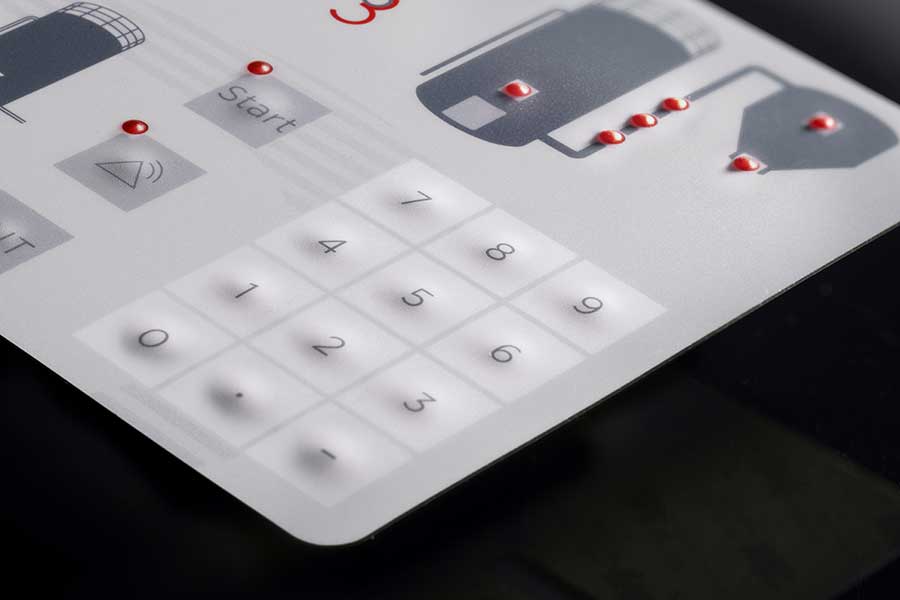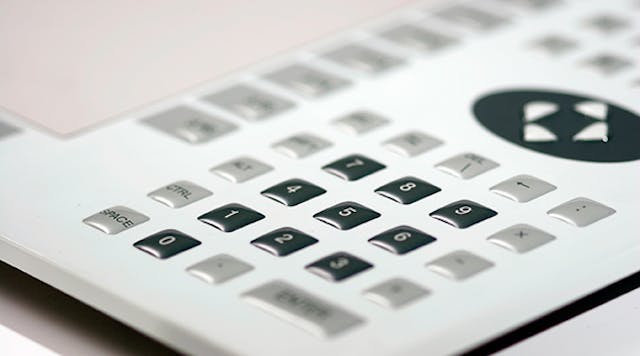Membrane Switches vs. Traditional Switches: What You Need to Know
Membrane Switches vs. Traditional Switches: What You Need to Know
Blog Article
Recognizing the Value of Membrane Switches in Interface
Membrane buttons are integral parts in the layout of efficient interface, promoting not just performance however likewise improving visual appeal and customer communication. Their special attributes, such as resistance to environmental elements and personalized layouts, make them appropriate for a varied range of applications throughout several industries. As we check out the different advantages and future patterns related to Membrane modern technology, it ends up being clear that these switches are greater than simply parts; they represent a merging of advancement and practicality. The ramifications of this technology on user experience deserve checking out even more.
What Are Membrane Switches?

The spacer layer, which has sticky properties, permits the splitting up of the circuit layer from the overlay, making certain that the button continues to be in a non-activated state until pressed. When stress is put on the overlay, it compresses the spacer layer, connecting the space and finishing the circuit in the underlying layer. This style not only lowers the physical room needed for conventional mechanical switches however likewise improves the resilience of the tool, as Membrane buttons are typically resistant to dust, dampness, and other ecological aspects.
Generally discovered in applications varying from consumer electronics to clinical tools, Membrane switches are indispensable to modern-day innovation, offering a user-friendly and efficient user interface that straightens with contemporary layout demands.
Benefits of Membrane Buttons
While numerous switch technologies exist, Membrane Switches deal distinctive advantages that make them specifically desirable in numerous applications. One of the main benefits of Membrane buttons is their portable design, which enables space-saving executions in gadgets where genuine estate is restricted. Their slim account not just improves aesthetic charm but additionally promotes light-weight building and construction.
One more significant benefit is their resistance to ecological elements. Membrane buttons are normally secured against moisture, dust, and contaminants, making them optimal for use sought after settings, such as medical tools and industrial tools. This durability prolongs the lifespan of the switch, minimizing maintenance expenses and boosting integrity.
Moreover, Membrane switches can be customized to fulfill certain style requirements, incorporating one-of-a-kind graphics and colors that enhance customer interaction. Their tactile responses choices can also be customized to provide an enjoyable individual experience. Additionally, Membrane switches are affordable, particularly in high-volume applications, as they can be generated efficiently.
Applications in Various Industries

In the customer electronic devices industry, Membrane buttons prevail in devices such as microwaves, washing machines, and remotes. Their responsive responses and visual options improve customer experience while supplying a smooth, modern look. In addition, vehicle suppliers use Membrane buttons in control panel controls and infomercial systems, where area is limited, and user engagement is essential.
In addition, the commercial sector leverages Membrane switches in control panels for machinery and equipment, enabling user-friendly operation in typically severe atmospheres. Their resistance to chemicals and wetness guarantees long life and integrity in these applications. Generally, the versatility of Membrane Switches adds considerably to their prevalent use, making them crucial in various technical domains.
Design Considerations for Membrane Switches

When designing Membrane switches, several crucial factors to consider must Get More Info be considered to make sure optimal capability and customer experience. The option of products is vital; selecting long lasting, top quality substratums can improve the button's durability and resistance to ecological factors such as wetness and temperature variations.
Second of all, the style of the graphic overlay need to focus on clarity and ease of use. Icons and text must be legible, and the design needs to assist in instinctive interaction (membrane switches). In addition, responsive feedback is essential; integrating a tactile dome or various other mechanisms can boost the individual experience by offering physical confirmation of activation
Another crucial variable is the switch's electrical efficiency. Developers need to ensure that the conductive traces are properly created to decrease resistance and stay clear of signal disturbance. This entails examining the required actuation pressure and ensuring compatibility with the electronic components they will certainly user interface with.

Future Fads in Membrane Innovation
As technology remains to advancement, Membrane buttons are poised to develop significantly, driven by developments in products and manufacturing techniques. One arising trend is the incorporation of innovative products, such as adaptable substrates and conductive inks, which enhance durability and decrease the overall weight of Membrane read the article switches. These materials not just boost the responsive action however also permit the layout of switches that can stand up to harsher environmental problems.
Moreover, the combination of touch-sensitive modern technologies is changing traditional Membrane Switches into even more interactive interface. Capacitive touch sensors installed within Membrane switch panels can provide a more user-friendly and receptive user experience, aligning with the expanding demand for smooth, modern layouts in consumer electronics.
Furthermore, improvements in printing strategies, such as electronic and 3D printing, allow quick prototyping and personalization of Membrane switches. This adaptability allows manufacturers to respond quicker to market needs and consumer preferences.
Finally, sustainability is ending up being a considerable focus, with suppliers exploring environment-friendly materials and procedures. As these trends unfold, the future of Membrane innovation promises boosted performance, visual appeal, and environmental duty, strengthening their function in advanced user interfaces across numerous sectors.
Conclusion
In verdict, Membrane Switches represent a crucial part in the style of individual interfaces, integrating capability with visual flexibility. As improvements in technology continue, the advancement of Membrane buttons is anticipated to further improve customer interfaces, driving innovation and enhancing functionality in a progressively complex technical landscape.
Membrane switches are indispensable components in the style of reliable user interfaces, assisting in not only capability yet likewise improving aesthetic charm and user interaction.Membrane Switches serve as a vital component in different user interfaces, facilitating a smooth interaction in between users and digital gadgets.While countless button modern technologies exist, Membrane Switches deal distinct advantages that make them specifically desirable in different applications.Furthermore, Membrane switches can be tailored to meet details style needs, incorporating unique graphics and shades that enhance user communication.In final thought, Membrane Switches stand for a vital part in the design of user interfaces, integrating performance with aesthetic flexibility.
Report this page